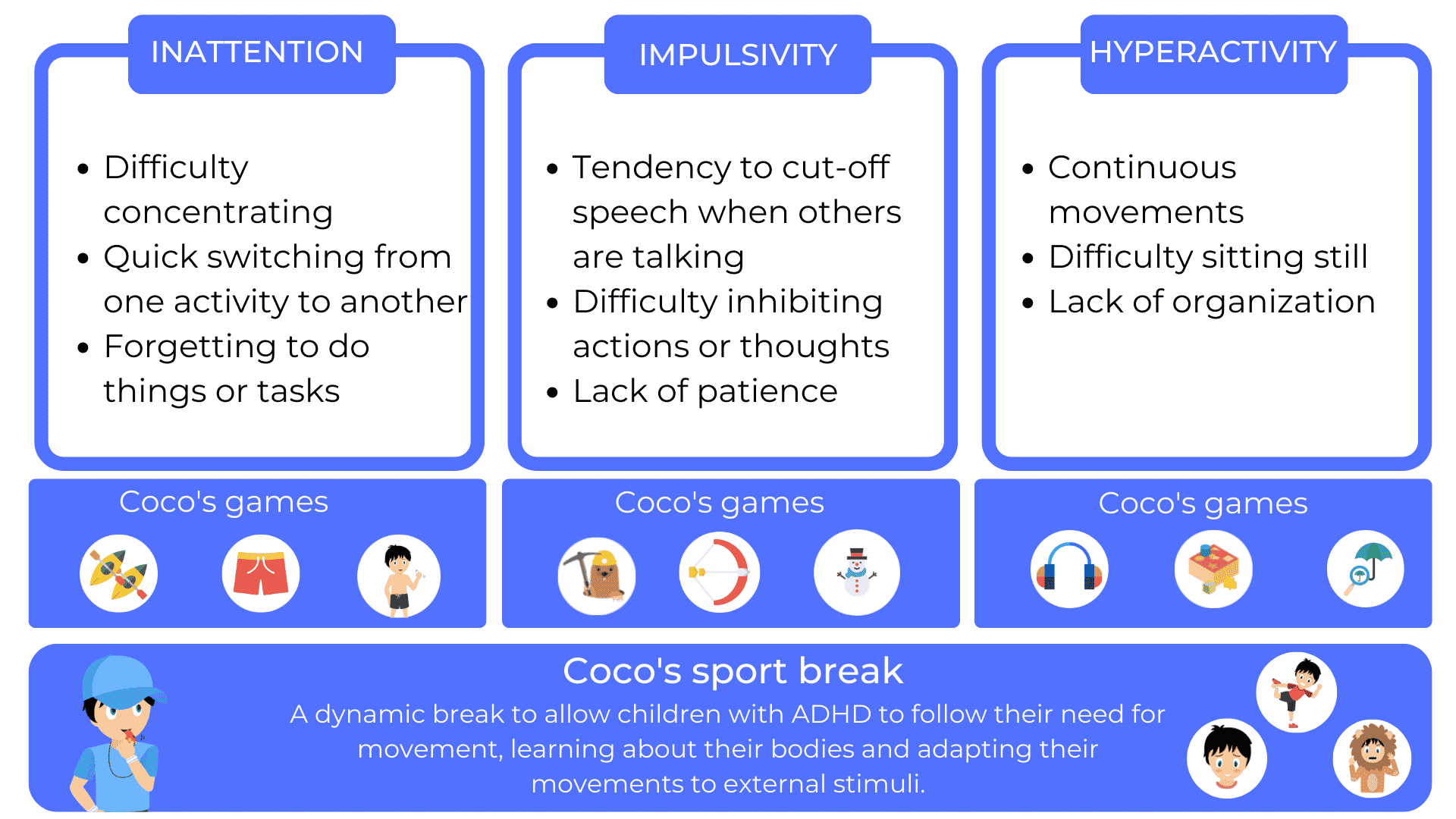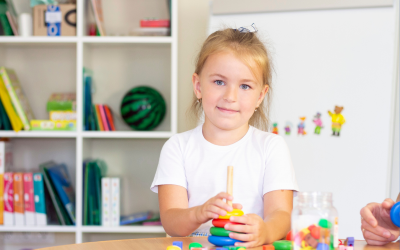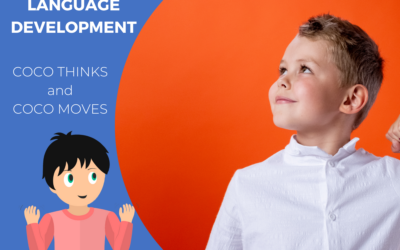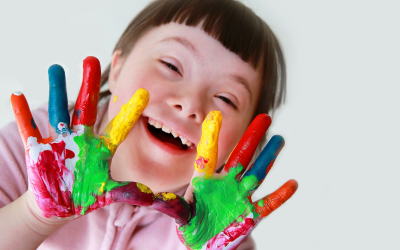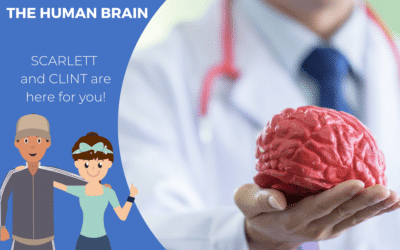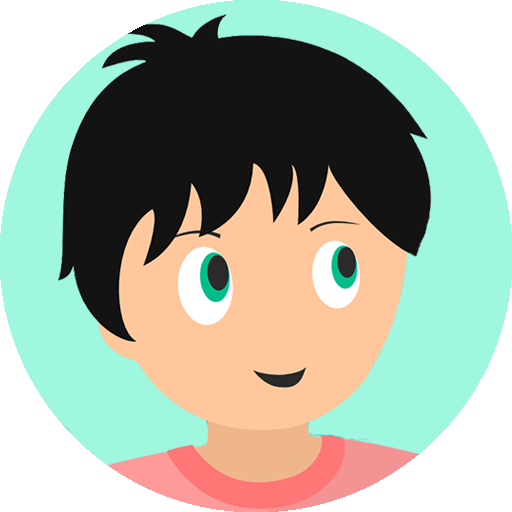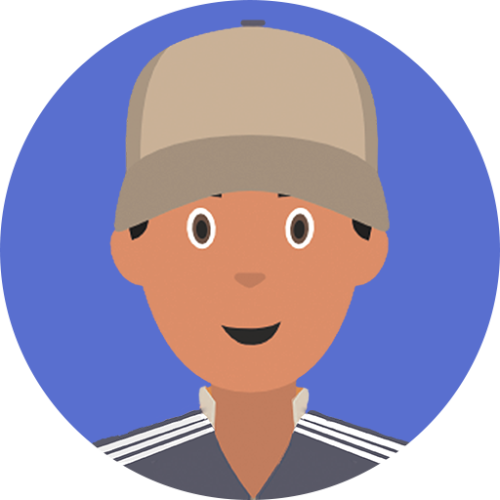Attention Deficit Hyperactivity Disorder (ADHD) can present challenges for children in their daily lives, including concentration, organization and cognitive skills. However, technology today offers a variety of tools that can help ADHD children improve these aspects of their lives. In this article, we will present a selection of applications, software and technological tools that have proven to be effective in supporting ADHD children in their learning and development.
1. Time and task management applications
ADHD children can benefit from time and task management apps that help them organize their schedules, set reminders and track their progress. These tools allow them to better plan their activities and improve their time management. Here are some of the best applications in this category:
a. Todoist
Todoist is a task management application that allows ADHD children to create to-do lists, set reminders and track their progress. The application offers an intuitive and customizable interface, making it easy to organize and plan daily activities.
b. Toggl
Toggl is a time tracking tool that can help ADHD children manage their time effectively. The application allows you to time activities and generate detailed time allocation reports. This helps children visualize how they use their time and identify areas where they could be more effective.
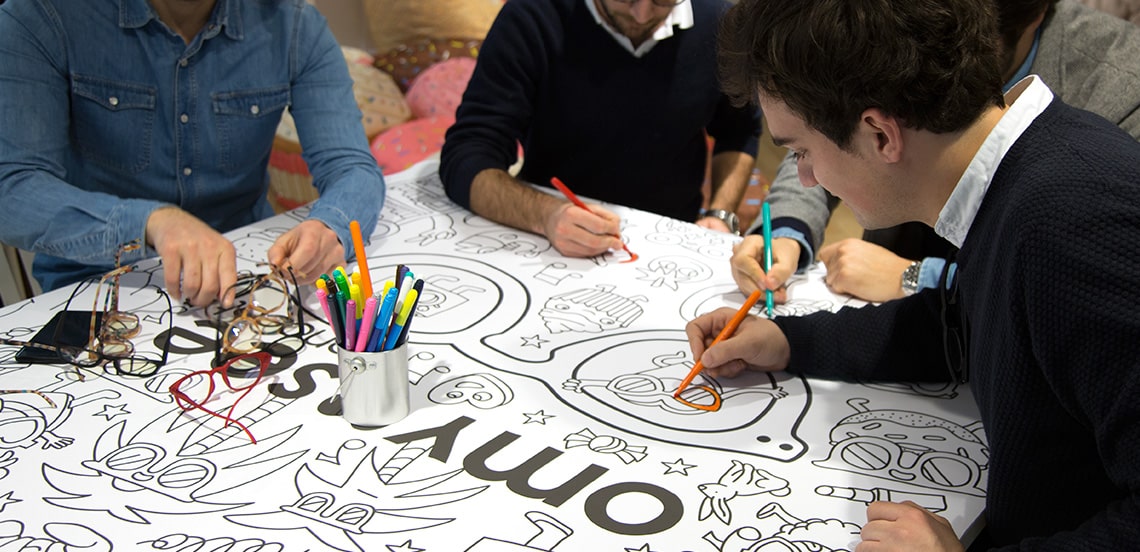
2. Note-taking tools
Note-taking can be a challenge for ADHD children, but technology tools can make this process easier and improve the organization of information. Here are some popular tools in this category:
a. Evernote
Evernote is a note-taking application that allows ADHD children to capture ideas, handwritten notes, images and even audio recordings. The application also offers an advanced search function, which makes it easy to find recorded information.
b. OneNote
OneNote is a note-taking tool developed by Microsoft. It offers great flexibility for ADHD children to organize their ideas, create lists and add annotations to documents. OneNote can be synced across multiple devices, allowing easy access to notes at any time.
3. Cognitive stimulation games and applications
ADHD children can benefit from games and apps that stimulate their cognition and improve their concentration. These fun tools offer exercises specifically designed to strengthen the cognitive skills of ADHD children. Here are some examples of effective tools in this category:
a. Lumosity
Lumosity is an application that offers a series of brain games designed to improve memory, attention and problem solving. ADHD children can practice in a fun way while developing their cognitive skills.
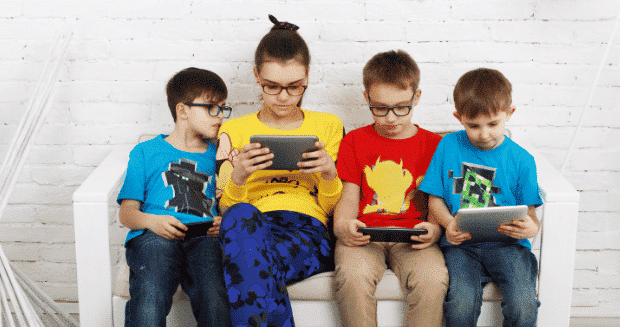
b. CogniFit
CogniFit is a brain training program that offers specific exercises to improve cognitive functions. The activities are adapted to the individual needs of each child, which promotes a personalized and effective training.
c. Coco Thinks and Coco Moves
Coco Thinks and Coco Moves are educational games designed for ADHD children. Coco Pense offers thinking, logic and problem-solving exercises, while Coco Bouge encourages physical activity and motor coordination. These interactive games offer a fun approach to stimulating cognitive and motor skills in ADHD children.
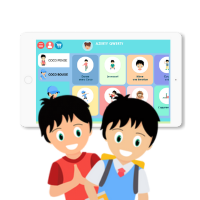
Technology offers a multitude of tools to support ADHD children in their development. The time management apps, note-taking tools, and cognitive stimulation games presented in this article are designed to improve the focus, organization, and cognitive skills of ADHD children. It is important to note that each child is unique, and it may be necessary to try different options to find the tools that work best for each individual. By using these tools appropriately and in combination with other support strategies, ADHD children can develop their skills and maximize their potential.
Don’t forget to consult a health care professional who specializes in ADHD for advice and recommendations tailored to your child.
Supporting ADHD children with the COCO THINK and COCO MOVE application
COCO THINKS and COCO MOVES is a program of educational and physical games for elementary school, from CP to CM2 in order to implement universal learning.
Children with ADHD have difficulty staying focused. It is therefore important to use games that work on theactivation or inhibition of movement, as well as games that require a specific response time.
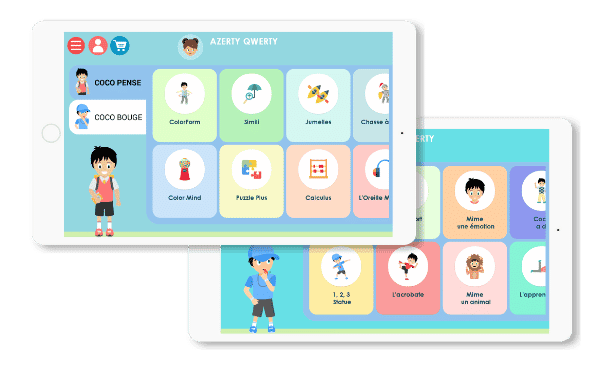
Adaptations of COCO THINKS and COCO MOVES for ADHD children
- Adapted physical exercises
- A personalized interface (possibility to hide games)
- Activities to teach body movement in space
- Activities for relaxation
- Activities that can be done sitting down
The mole invasion
In this game the child will see 3 different moles, and therefore 3 different stimuli. A normal mole he has to tap once, a mole with a helmet to tap twice and a mole with the glasses not to touch.
In this game we stimulate the activation and inhibition of the movement according to the stimulus. The child can learn to adapt to his environment, to take external information to choose which movement to make.
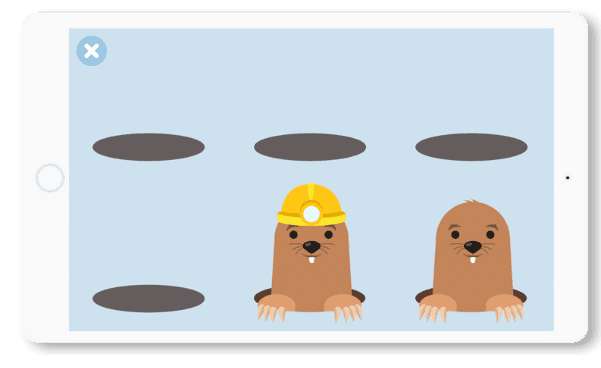
Balloon drill
In this game the child has to shoot arrows and reach the balloons according to the instructions.
In this game, there is no question of speed, but the child must watch the movement of the balloons and wait for the right moment to shoot. He must therefore stop his movement and wait for the best moment to shoot. The child must blow up only the balloons of one color, so it is very important to read the instructions carefully before starting to play.
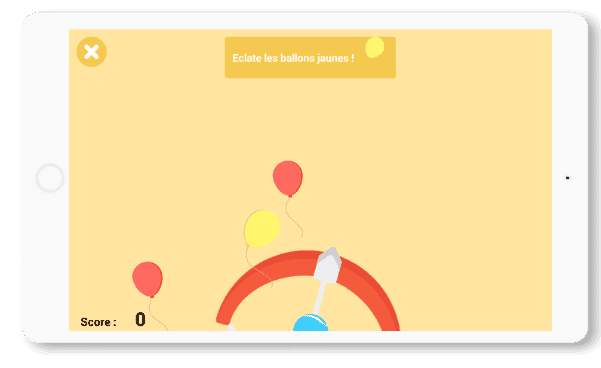
Snowball effect
In this game the child must press a single arrow to launch a snowball that must reach all the arrows on the screen. The child cannot quickly press the first arrow he sees, but must think carefully before acting. This game stimulates cause and effect, i.e. thinking about the consequences of an action.
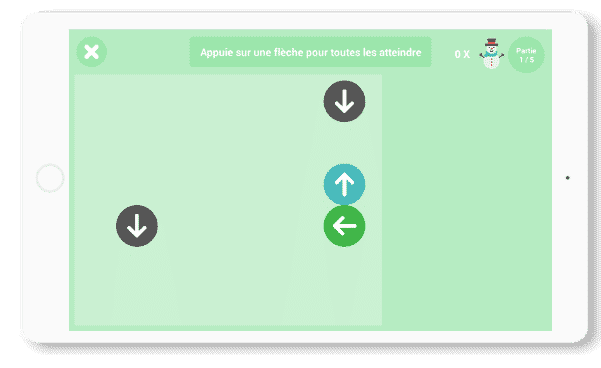
A follow-up of the evolution over time
In the application COCO THINKS and COCO MOVES there is a general score indicative of the performance, to know the level of competence. In addition, there are details on performance (time used to complete the activity, correct answers, movements needed and movements performed).
Children can see their strengths and areas for improvement:
if they need to improve their response time, strategy or skill, for example.
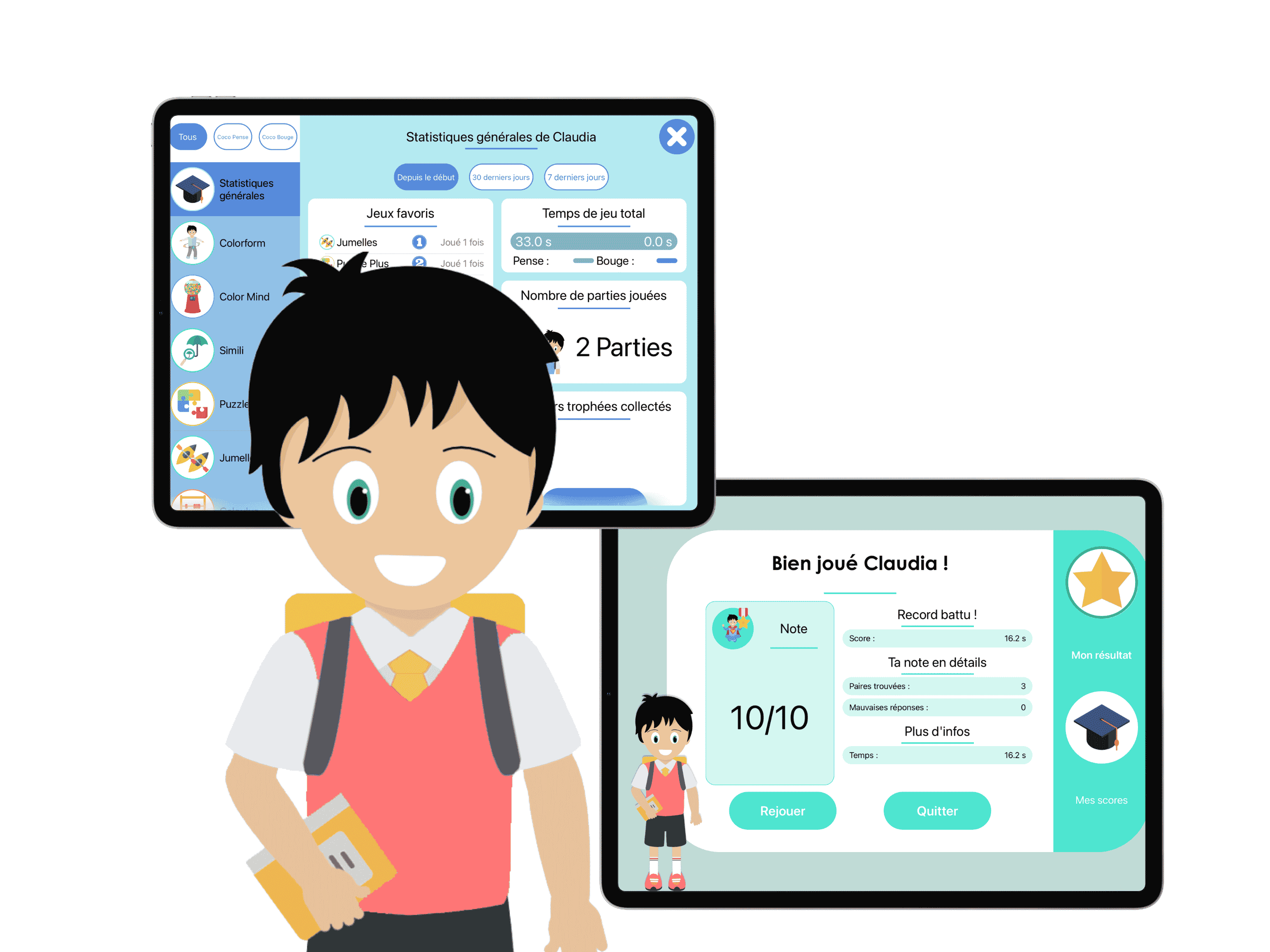
Other articles that might interest you:
Supporting children with autism
Dynseo proposesSUPPORTING CHILDREN WITH AUTISM with COCO THINKS AND COCO MOVESDynseo and its team are very much...
Supporting DYS children with COCO THINKS and COCO MOVES
Dynseo proposesDYS disorders with COCO THINKS and COCO MOVESOur educational and pedagogical games program COCO THINKS...
Language development
Children communicate from birth with movements, crying, looking at each other or with smiles. After only a few months,...
Supporting children with Down Syndrome with Coco
Dynseo proposesDOWN SYNDROME with COCODown syndrome is a non-hereditary chromosomal abnormality that leads to the...
Supporting people after a stroke
Dynseo proposesStroke with CLINT, your brain training coachThe Dynseo team is very involved in helping people who have...
Supporting someone with Alzheimer’s
In this guide, we will detail how SCARLETT can be used for supporting someone with Alzheimer's. SCARLETT is a...
10 myths about the human brain you didn’t know
The brain is an incredible muscle, however there are many things we do not know, and what we do know is not always...
Using Digital Tools to Support Students with Special Educational Needs
Special Educational Needs (SEN) encompass a wide range of learning difficulties and disabilities that can hinder a...
Down Syndrome and Communication: Facilitating Interaction with Visual and Interactive Supports
When we think about Down syndrome, we often recognize it as a genetic condition that affects physical and cognitive...
How to Track Progress in People with Down Syndrome Using Digital Tools
Down syndrome, a genetic condition caused by the presence of an extra chromosome 21, affects approximately 1 in every...


